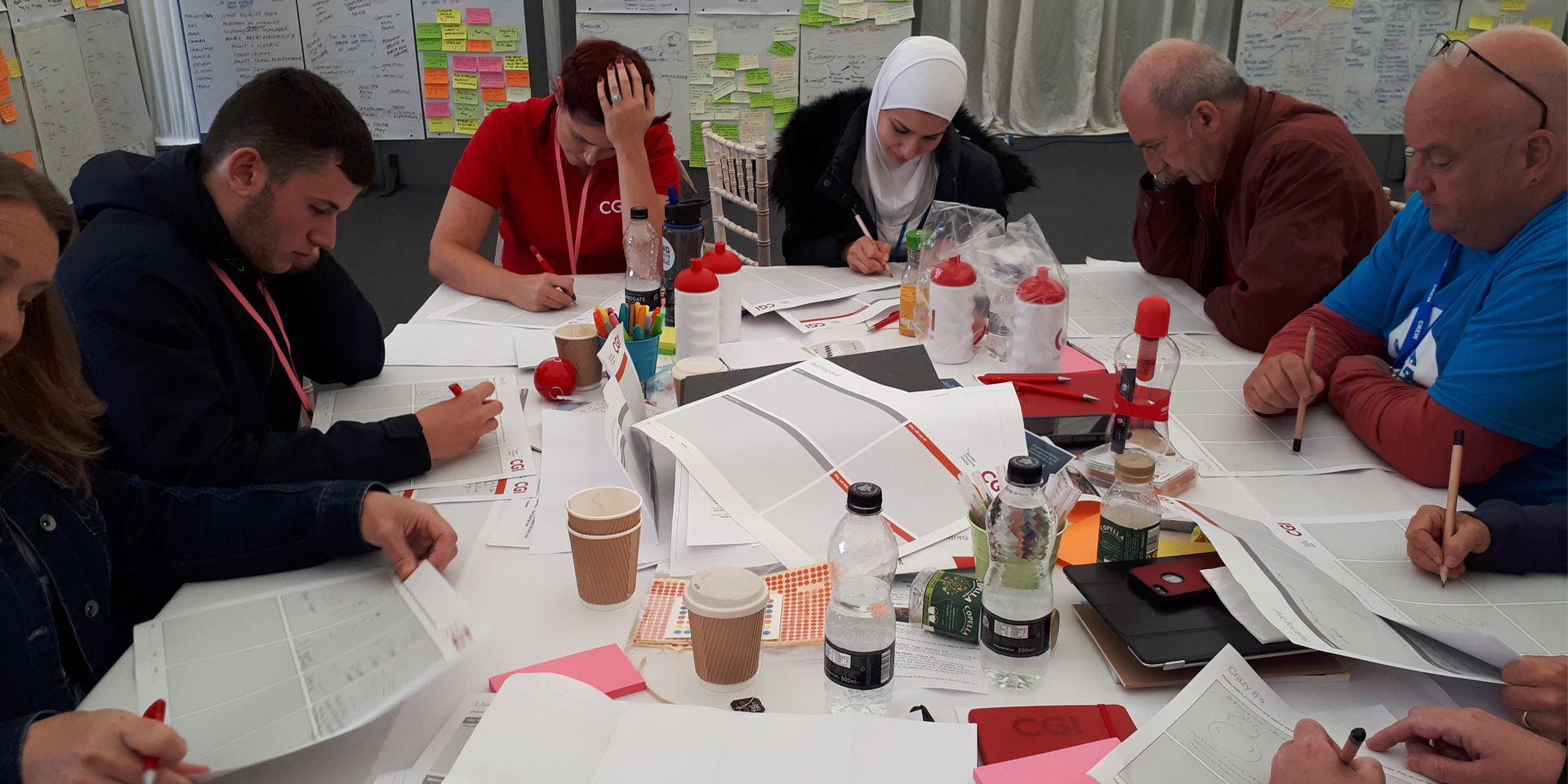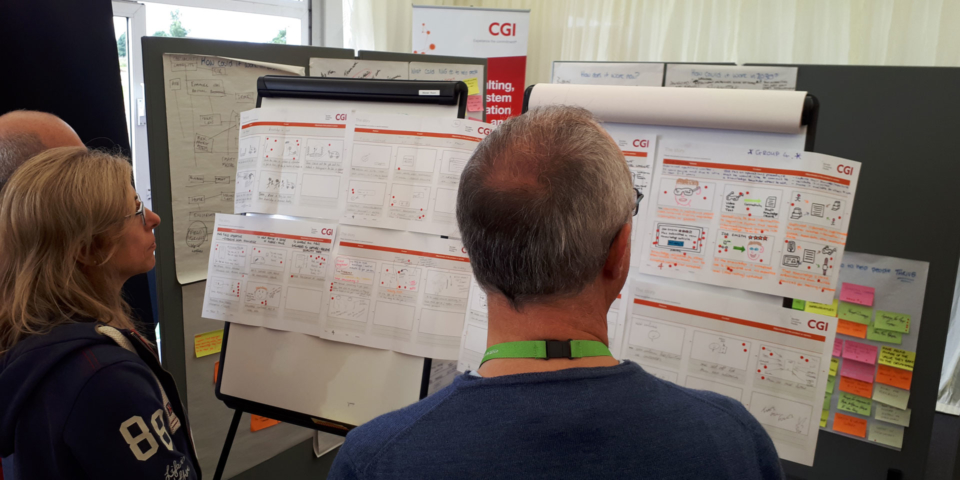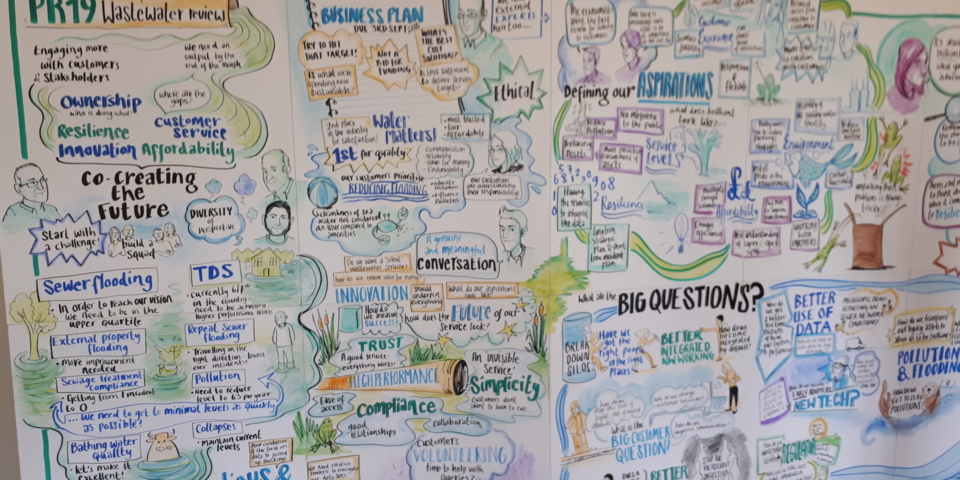Northumbrian Water Group Innovation Festival
Design Innovation, Design Sprint, Innovation WorkshopNorthumbrian Water Group Innovation Festival

I was recently asked to be a co-facilitator at a design sprint for Border Crossing who partnered with CGI at the NWG (the Northumbrian Water Group) Innovation Festival; the challenge of our Sprint was ‘Tomorrow’s world: What will living and working look like in 2030.’ Our 5 day Sprint was based on the Google Sprint Process whereby you condense the human centred design process over a series of 5 days.
During the course of the sprint/challenge we went through the design thinking process:
DAY 1 – Understanding the problem: Here teams discover who the users are, their needs (what they value). This involves convergent thinking: research, analysis and understanding the context of the problem. To aide collaborative synthesising and analysis of data it helps to visualise the findings this can take the form of matrices, ven diagrams, cluster groups etc.
After further synthesis our research question was narrowed down to ‘How can we create a happier workforce by helping employees reduce admin and redtape to work smarter and not longer’.
DAY 2 – Diverge: Teams diverge here to ideate. Anything is possible. Participants in the Design Sprint should explore all possible solutions to their user’s problems.
We used the crazy 8 method to brainstorm ideas individually and then storyboards to convey the participants ideas…



…DAY 3 – Decide: The teams take time to review all ideas and vote for the best options. (This is nice if done as a show and tell.)
Our team chose to pick and mix various features and facets of individual concepts and storyboards to create the ‘workspace of the future’ – Bradley, a fully integrated SMART network linking all of your employees, associated organisations and SMART utility networks to streamline tasks and improve productivity and efficiency through shared use of relevant data and individual personalisation via machine learning etc.
DAY 4 – Prototype: The teams create lo-fidelity prototypes based on the winning ideas without investing a lot of time, money, or resources. Our team created a short video prototype to demonstrate their concept.
DAY 5 – Validate: The teams test out their prototypes on their user groups in order to revise and reiterate their prototypes based on feedback.
During this process the design sprint allowed us to discover, define, develop and deliver solutions at pace in a collaborative and conducive environment where you are allowed to fail fast and deliver low fidelity prototypes.
In total we had over 100 sprinters throughout the course of the week with different areas of interest and expertise and were able to prototype and test four possible solutions that CGI intend to explore further.

